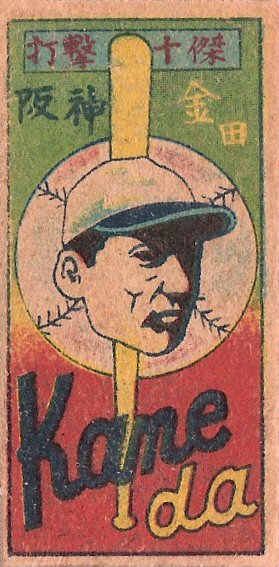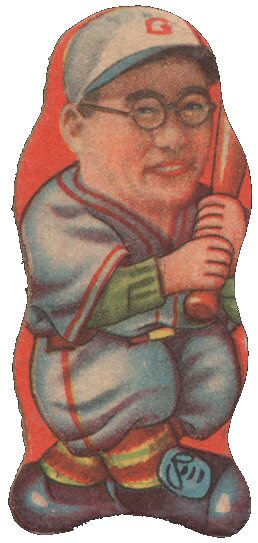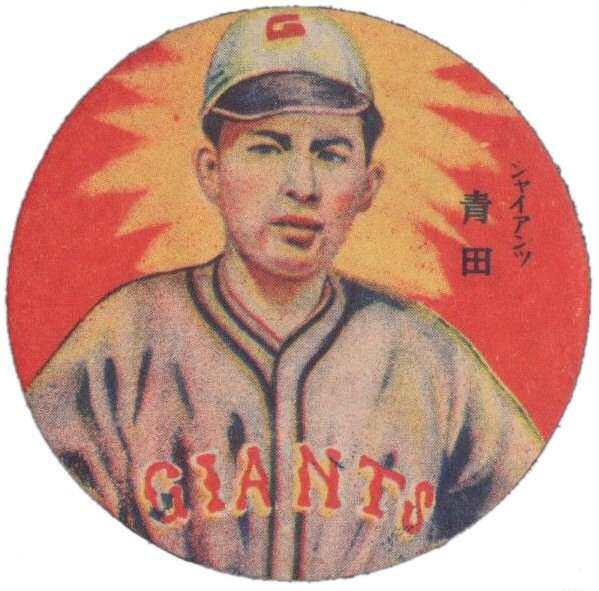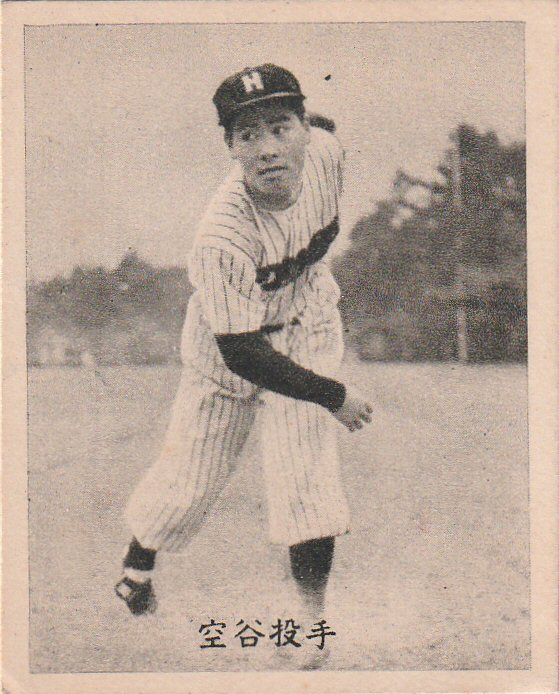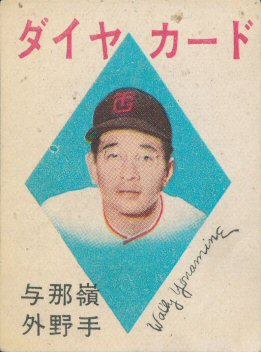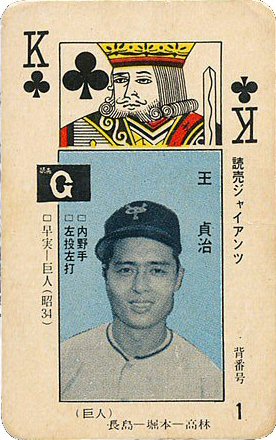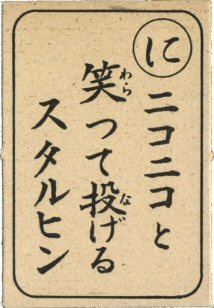 Old Cardboard Website Sponsor |

|
|
| Home N-Cards D-Cards E-Cards F-Cards M-Cards R-Cards T-Cards W-Cards Postcards Pins Game Cards Foreign Others | |
Vintage Japanese Baseball Card Basics
|
For vintage baseball card collectors looking for a new challenge, we recommend taking a close look at vintage Japanese cards.
Several important differences separate Japanese cards from their American counterparts. For one, early (pre-1960 or so) Japanese cards were often produced in smaller sets. It is not unusual to encounter sets of a dozen or so cards. As a result, there tends to be a higher portion of Japan's Hall of Famers, as well as a lot more sets to conquer. No doubt the greatest challenge for American collectors, however, is learning to identify the cards (players), since player names in a large majority of the sets are printed only in Japanese. When adding that to a new world of players, teams and Japanese card producers, there is clearly no shortage of challenge. But more and more, collectors are accepting the challenge and thoroughly enjoying this new dimension of the vintage baseball card collecting hobby. As with American sets, Japanese cards have been divided into a handful of different groups based on production processes, card designs and set purposes and sponsors. These groups and card sets have been created by Gary Engel and are used in his "Japanese Baseball Card Checklist and Price Guide."
The key attributes for each of these groups are described in more detail below for sets produced around 1960 or before. They are:
Representative examples from each of these groups are illustrated below, along with a description and comparison of each. Note that there are several additional card groups (generally more modern and thus beyond the scope of this website) not listed here. The additional groups are identified near the end of this article.
Menko is a game in which cards are thrown at other cards on a flat surface to try to "flip" or turn over the cards of an opponent. Menko cards are separated by collectors into three distinct groups: Rectangular Menko, Round Menko and Diecut Menko. Cards from all three menko groups are usually made from thick cardboard and are printed on the backs with various graphics such as team logos, paper/scissors/rock symbols and "menko numbers." Traditionally, "menko" card backs are either blank or printed with elements that have little or nothing to do with the card throwing game of menko. Thus, such items as paper/scissors/rock icons, dice, playing card images and "menko numbers" are printed that could be used in other games.
The earliest bromides were mostly small black and white photos, although many later sets were produced in color and with a larger format. Most bromides have some labeling in Japanese on the card fronts (often limited to the player's surname and team or playing position). The labeling is usually etched into the film used in the card's production. Bromides generally have blank backs. Some were used as larger "prize" versions of the smaller (regular) sized cards. Because they are mostly photographically produced, bromides often provide more detail (higher resolution) than their menko or other traditionally printed counterparts.
Among these sponsors were Kobai, Cisco, Gilco, Meiji, Fujiya, Hitachi and other caramel companies, as well as Lotte, Jintan, Seiko, Sakai, Maruto, Orion and Lili gum brands. Other food producers got into the act, resulting in dozens of collecting options for today's hobbyists. The cards in most of these sets are similar in size to American cards produced at the time. Some, however, measured under 1-1/2 inches square and several gum issues were cut long and narrow allowing insertion into packages of stick gum. One of the more unique and interesting of these was a set printed onto (and stamped into) colored plastic stock.
In addition to these more traditional Japanese "game" cards, baseball simulation games using player's images on the cards became increasingly popular in the late 1940s and early 1950s. These sets often featured the starting lineup from each professional team, often resulting in a somewhat larger set with many lesser know players represented. Other card sets that parallel those found in a standard deck of 52 playing cards were also produced, as illustrated in the example at left. These playing card set varied in quality. Some were printed on higher quality stock and were cut with rounded corners, while other were hand cut from sheets printed on lower quality card stock. Most all of the card backs were printed with typical playing card designs.
The contestants then tried to match the hints to a corresponding "player" card (which are of course much more highly valued among today's collectors). All cards (both player and reading) were generally blank backed. As previously indicated, these seven vintage Japanese card groups make up the core of vintage Japanese card sets through about 1960--the nominal cutoff date for the inclusion of sets that are profiled on the Old Cardboard website. Other "Modern" Card Groups: Beyond the above seven vintage card categories, other Japanese card groups have been identified. While important and widely collected, the vast majority of the cards in these groups were produced in the 1960s, 1970s, 1980s and after, and thus fall beyond the scope of the Old Cardboard website. They are focused mostly on specific producers including Takara (JT), Calbee (JC), Yamakatsu (JY) and other miscellaneous sets not covered in one of the above groups. The Japanese section of the Old Cardboard website has been significantly expanded to include Set Profiles for about two dozen additional vintage Japanese baseball card sets. This includes a Gallery of Sets page organized according to the above groups to assist the user in identifying the sets profiled. We welcome all suggestions (and corrections) for keeping the Old Cardboard website accurate as a go-to resource for all collectors of vintage baseball cards and memorabilia.
Reference: | |||||||||||||||
| Home N-Cards D-Cards E-Cards F-Cards M-Cards R-Cards T-Cards W-Cards Postcards Pins Game Cards Foreign Others | |
|
Copyright 2003-2023. Suggestions and corrections from all viewers are always welcome and appreciated. | |
